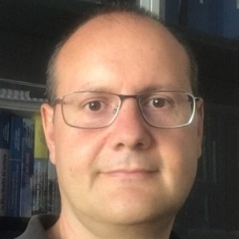Groundwater Flow and Transport Models
A special issue of Water (ISSN 2073-4441). This special issue belongs to the section "Hydrology".
Deadline for manuscript submissions: closed (30 April 2022) | Viewed by 11668
Special Issue Editors
Interests: small-scale hydraulic problems; mathematical models of flooding; deterministic flow and transport models in groundwater; stochastic models of transport in groundwater; solution of inverse problems in groundwater; impacts of climate change on water resources; surrogate models for groundwater
Interests: groundwater; geostatistics; river levees; inverse problems; mini/micro hydro; water in buildings
Interests: groundwater; parameter identification; groundwater hydrology; contaminant transport; inverse problems; contaminated sites; flow and transport modelling; climate change
Special Issues, Collections and Topics in MDPI journals
Interests: inverse problems in surface hydrology; hydraulics and groundwater modeling; impacts of climate change on meteorological variables and water resources
Special Issues, Collections and Topics in MDPI journals
Special Issue Information
Dear Colleagues,
Groundwater is a valuable resource for water supply, irrigation, industry, but also for the environment as a whole. It is endangered by overexploitation, pollution, and climate change. The need to analyze the effect of anthropogenic and climatic forcing requires the development of accurate and reliable numerical models, with a reasonably fast execution speed.
This Special Issue focuses on recent advances and possible developments in modeling of flow and transport in groundwater. We invite researchers to present contributions dealing with the most different approaches for groundwater modeling possibly carried out with the use of parallel computing, new numerical techniques, surrogate models, and neural networks.
Potential topics include but are not limited to:
- Saturated/unsaturated flow;
- Seawater intrusion;
- Identification of flow and transport parameters through inverse approaches;
- Estimation of the contaminant source location and its release in time;
- Modeling remediation actions of aquifers contaminated by point sources, by diffuse spreading, even by NAPL contaminants;
- Validation of groundwater simulation models through experimental data.
Prof. Dr. Maria Giovanna Tanda
Prof. Dr. Ilaria Butera
Prof. Dr. Andrea Zanini
Prof. Dr. Marco D’Oria
Guest Editors
Manuscript Submission Information
Manuscripts should be submitted online at www.mdpi.com by registering and logging in to this website. Once you are registered, click here to go to the submission form. Manuscripts can be submitted until the deadline. All submissions that pass pre-check are peer-reviewed. Accepted papers will be published continuously in the journal (as soon as accepted) and will be listed together on the special issue website. Research articles, review articles as well as short communications are invited. For planned papers, a title and short abstract (about 100 words) can be sent to the Editorial Office for announcement on this website.
Submitted manuscripts should not have been published previously, nor be under consideration for publication elsewhere (except conference proceedings papers). All manuscripts are thoroughly refereed through a single-blind peer-review process. A guide for authors and other relevant information for submission of manuscripts is available on the Instructions for Authors page. Water is an international peer-reviewed open access semimonthly journal published by MDPI.
Please visit the Instructions for Authors page before submitting a manuscript. The Article Processing Charge (APC) for publication in this open access journal is 2600 CHF (Swiss Francs). Submitted papers should be well formatted and use good English. Authors may use MDPI's English editing service prior to publication or during author revisions.
Keywords
- groundwater
- groundwater modeling
- transport in groundwater
- inverse problems in groundwater
- seawater intrusion
- groundwater surrogate models
- groundwater neural network
- saturated/unsaturated models
- groundwater pollution
- pollutant source characterization








